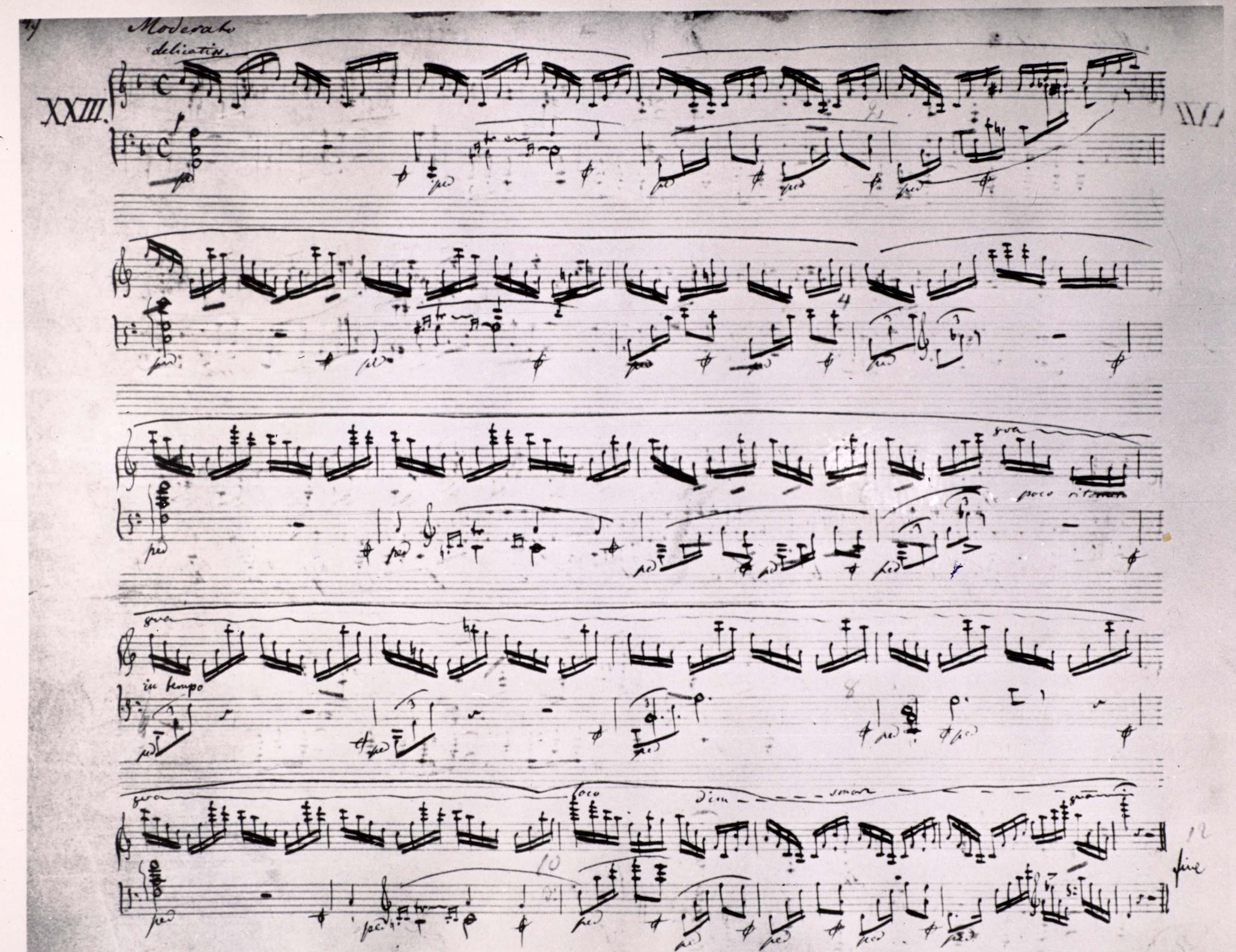



The version of GE resulted from an erroneous interpretation of the illegible correction concerning the pitch of this note in FC – the copyist most probably first wrote g1 and then turned it into f1, as a result of which both the 2nd line and the 1st space are covered. A correction (crossing-out) is also visible in A, in which, however, it almost certainly concerned rhythm – Chopin pondered whether to write the discussed note as a minim.
The pencilled correction of the wrong clef (bass) visible in FC at the beginning of the bar – it opens the line in this manuscript – as well as a possible crossing-out of one of the notes (rather the bottom one, hence f1) on the 2nd L.H. quaver were performed by a later owner of FC, i.e. Hermann Scholtz.
Compare the passage in the sources »
category imprint: Graphic ambiguousness; Differences between sources; Corrections & alterations; Source & stylistic information
issues: Corrections in A, Errors resulting from corrections, Foreign hand additions in manuscripts, Deletions in A, Inaccuracies in FC, Alterations in CF
notation: Pitch

